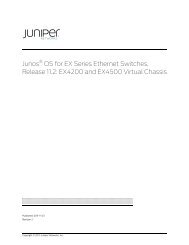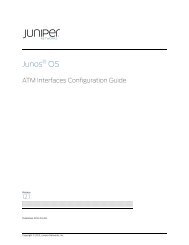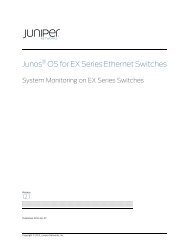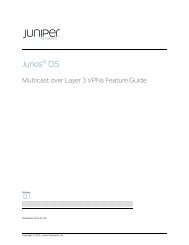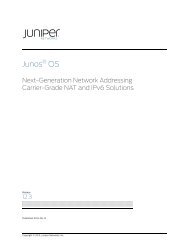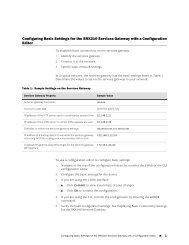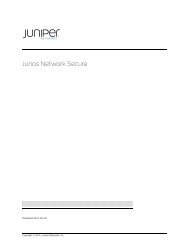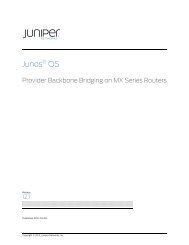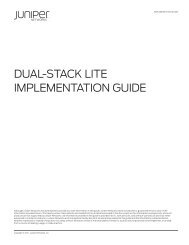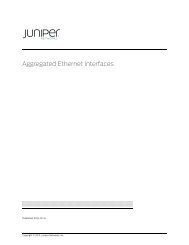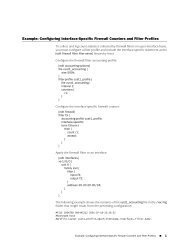Spanning Tree Protocol on Juniper Networks MX Series 3D ...
Spanning Tree Protocol on Juniper Networks MX Series 3D ...
Spanning Tree Protocol on Juniper Networks MX Series 3D ...
Create successful ePaper yourself
Turn your PDF publications into a flip-book with our unique Google optimized e-Paper software.
<str<strong>on</strong>g>Spanning</str<strong>on</strong>g> <str<strong>on</strong>g>Tree</str<strong>on</strong>g> <str<strong>on</strong>g>Protocol</str<strong>on</strong>g><br />
<strong>on</strong> <strong>Juniper</strong> <strong>Networks</strong> <strong>MX</strong> <strong>Series</strong> <strong>3D</strong> Universal Edge Routers<br />
Virtual switches that have VLAN spanning trees enabled can still run standard STP and<br />
RSTP <strong>on</strong> the ports and can interoperate with standard IEEE 802.1Q bridges by sending<br />
untagged BPDUs to the IEEE standard bridge group (MAC address 01-80-c2-00-00-00).<br />
VSTP does not directly interoperate with STP, RSTP, and MSTP. Instead, VSTP BPDUs<br />
are transparently tunneled by standard STP, RSTP, and MSTP bridges. To interoperate<br />
with standard IEEE 802.1Q bridges, RSTP must also be enabled <strong>on</strong> any ports where VSTP<br />
is enabled.<br />
When interoperating with other vendor VLAN STP soluti<strong>on</strong>s, VSTP BPDUs that are tagged<br />
with another vendor’s multicast MAC address (for example, 01-00-0c-cc-cc-cd) are<br />
tunneled across the IEEE 802.1Q CST. This allows VSTP spanning tree informati<strong>on</strong> to be<br />
maintained by <strong>Juniper</strong> <strong>Networks</strong> devices even if they are separated by a cloud of standard<br />
IEEE 802.1Q network devices from other vendors.<br />
20<br />
Copyright © 2013, <strong>Juniper</strong> <strong>Networks</strong>, Inc.



